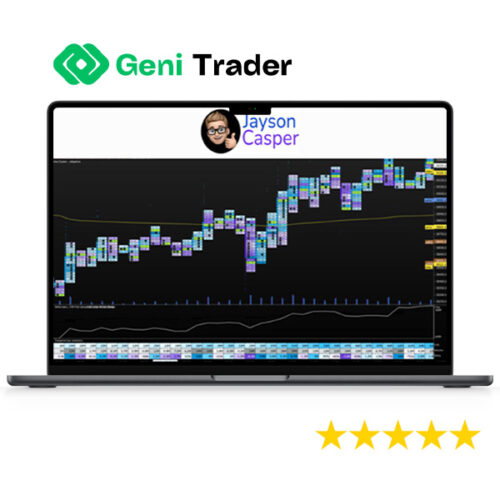Trading180 – Supply And Demand Zone Trading Course
Original price was: $689.00.$13.00Current price is: $13.00.
- 24/7 Contact Support & Fast Chat
- Original Courses HD Quality
- Courses Are Updated
- Checked Download Links
- Guaraneed Safe Checkout
Description
Trading180 – Supply And Demand Zone Trading Course

Supply And Demand Zone Trading Course: Master the Market with Precision and Strategy
Unlock the secrets of strategic market analysis and elevate your trading skills with the Supply And Demand Zone Trading Course by Trading180. This comprehensive program offers a unique approach to trading, focusing on the critical concepts of supply and demand zones. Whether you’re a beginner or an experienced trader, this course provides the tools and insights necessary to make informed and precise trading decisions. Learn to identify key market zones, develop effective entry and exit strategies, and safeguard your trading capital through proven risk management techniques.
If you want to enhance your trading game, this course is your key to success.
Why Choose the Supply And Demand Zone Trading Course?
The Supply And Demand Zone Trading Course stands out for its:
- Strategic Approach: Focuses on identifying critical supply and demand zones to guide trading decisions.
- Practical Application: Uses real-world case studies to bridge theory and practice.
- Emotional Discipline: Addresses psychological aspects of trading to help maintain discipline and confidence.
- Continuous Learning: Ensures you stay updated with market dynamics through regular updates and community engagement.
What Core Concepts Will You Learn?
How Do Supply and Demand Zones Form the Foundation of the Course?
Understanding supply and demand zones is at the heart of the Supply and Demand Zone Trading Course. This foundational knowledge enables traders to interpret market movements more accurately and make more informed trading decisions.
Understanding market zones introduces traders to supply and demand zones, critical areas on a price chart where buying and selling pressures meet. A supply zone represents an area where sellers exceed buyers, creating resistance, while a demand zone represents an area where buyers exceed sellers, providing support. Learning to identify these zones allows traders to anticipate price movements and prepare for market reversals.
By understanding the principles of supply and demand, traders can develop strategies for entering trades at demand zones (support) and exiting at supply zones (resistance). This knowledge helps minimize risks and maximize returns by aligning trading decisions with potential areas of high liquidity and market reversals.
What Techniques Are Taught for Identifying Market Zones?
One of the standout features of the Supply and Demand Zone Trading Course is its focus on precision in market analysis. Traders learn various techniques to identify supply and demand zones accurately, which is essential for effective trading.
Analyzing historical price movements helps participants identify price imbalances and patterns that signify key supply and demand zones. By understanding past price behaviour, traders can predict future movements and identify potential turning points in the market.
Recognizing price imbalances is a technique taught for identifying areas where significant buying or selling interest has occurred. This includes spotting areas where the price has sharply reversed, indicating a potential supply or demand zone. These insights help traders anticipate future market movements and develop strategies that align with these zones.
How Does the Course Enhance Tactical Trading Approaches?
How Are Entry and Exit Strategies Developed?
The Supply And Demand Zone Trading Course guides traders on developing effective entry and exit strategies based on supply and demand principles. Understanding where and when to enter or exit a trade allows traders to make more strategic decisions and improve their overall performance.
Aligning with market liquidity emphasizes entering trades at demand zones and exiting at supply zones, which align with areas of high market liquidity. This tactical approach ensures traders are not caught in market traps and can capitalize on potential market reversals.
Timing and execution involve waiting for confirmation signals before entering a trade. This includes using candlestick patterns, volume analysis, and other technical indicators to validate a trade setup. Proper timing and execution are crucial for minimizing risks and maximizing profits.
What Risk Management Protocols Are Covered?
Understanding the importance of risk management is crucial for any trader, and the Supply And Demand Zone Trading Course provides robust protocols to safeguard trading capital.
Setting stop-loss levels teaches traders how to set strategic stop-loss levels based on identified supply and demand zones. This ensures that potential losses are minimized and capital is preserved, allowing for a more sustainable trading approach.
Determining position sizes involves calculating risk-to-reward ratios and adjusting position size to align with overall risk tolerance and trading goals. These protocols help maintain a balanced trading approach and prevent overexposure to the market.
What Makes This Course a Transformative Learning Experience?
How Are Theoretical Concepts Bridged with Practical Application?
To reinforce theoretical knowledge, the Supply And Demand Zone Trading Course includes practical applications through case studies. This approach helps traders gain real-world experience and confidence in implementing the strategies discussed in the course.
Case studies of successful trades present real-world examples where supply and demand zone analysis has been successfully applied. These case studies help traders see how the concepts work in practice and provide valuable insights into the decision-making processes of experienced traders.
Hands-on practice through interactive exercises and simulations allows participants to practice identifying supply and demand zones, developing entry and exit strategies, and managing risks. This hands-on experience bridges the gap between theory and practice, ensuring that traders are well-prepared to implement these strategies in live markets.
Why Are Psychological Aspects of Trading Important?
The psychological challenges of trading are often underestimated, but the Supply And Demand Zone Trading Course recognizes their importance and addresses them comprehensively.
Mastering emotional discipline is crucial, as trading can be emotionally challenging. The course teaches techniques to manage emotions, stay disciplined during market fluctuations, and make decisions based on the identified supply and demand zones. Understanding the psychological aspects of trading helps participants avoid common pitfalls such as fear, greed, and impulsive decisions.
Building confidence in trading strategies focuses on mastery of supply and demand zones. When traders feel confident in their analysis and strategy, they are more likely to make rational decisions and achieve consistent success.
How Does Community Collaboration Enhance Learning?
What Role Does Peer Learning Play in the Course?
The Supply And Demand Zone Trading Course fosters a community-oriented learning environment, encouraging participants to engage with each other, share insights, and learn from their peers.
Interactive forums and discussions allow traders to ask questions, share experiences, and discuss strategies. This collaborative approach enhances the learning journey, providing participants with diverse perspectives and practical tips from fellow traders.
Mentorship and support from experienced traders guide participants through the complexities of supply and demand zone analysis. This support network helps traders stay motivated and focused on their trading goals.
Why Is Continuous Learning Emphasized?
The financial markets are constantly changing, and the Supply And Demand Zone Trading Course emphasizes the importance of continuous learning to stay ahead of market dynamics.
Adapting to market changes guides traders on how to adjust their supply and demand zone strategies to evolving market conditions. This includes understanding how different economic factors, geopolitical events, and market trends can impact supply and demand zones.
Regular updates and insights ensure that course content is always current with the latest market developments and trading techniques. This keeps participants at the cutting edge, helping them refine their skills and maintain a competitive edge.
Conclusion: Why Is This Course Essential for Aspiring Traders?
The Supply And Demand Zone Trading Course by Trading180 is more than just a trading program—it is a comprehensive toolkit for mastering the art of trading. With a focus on supply and demand zone concepts, precise zone identification techniques, strategic entry and exit strategies, robust risk management protocols, practical case studies, psychological resilience, community collaboration, and continuous learning, this course offers everything you need to excel in the competitive world of financial markets.
If you’re ready to take your trading skills to the next level and develop a deep understanding of supply and demand zone trading, enrol in the Supply And Demand Zone Trading Course today and start your journey toward becoming a more informed, confident, and successful trader.








